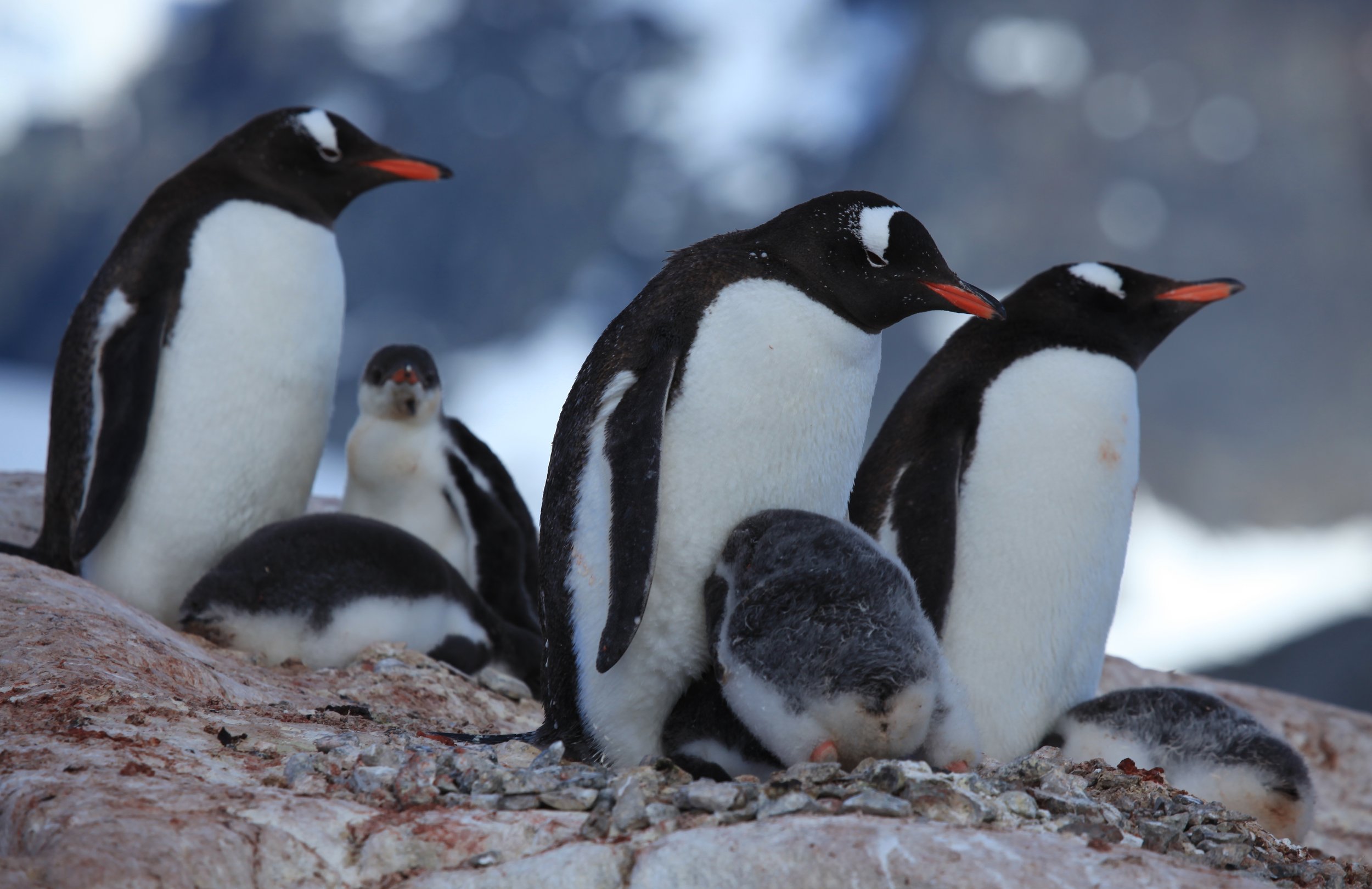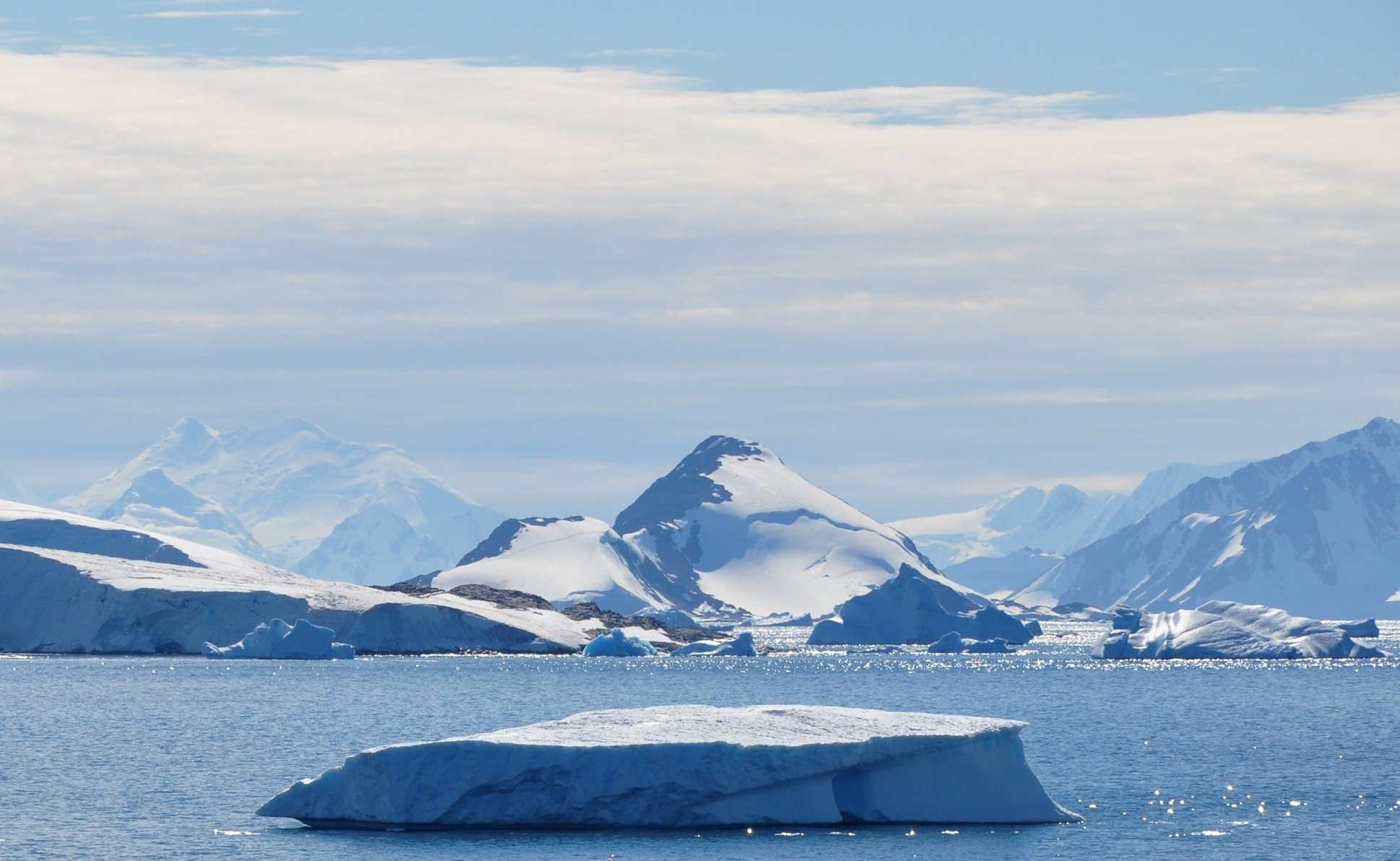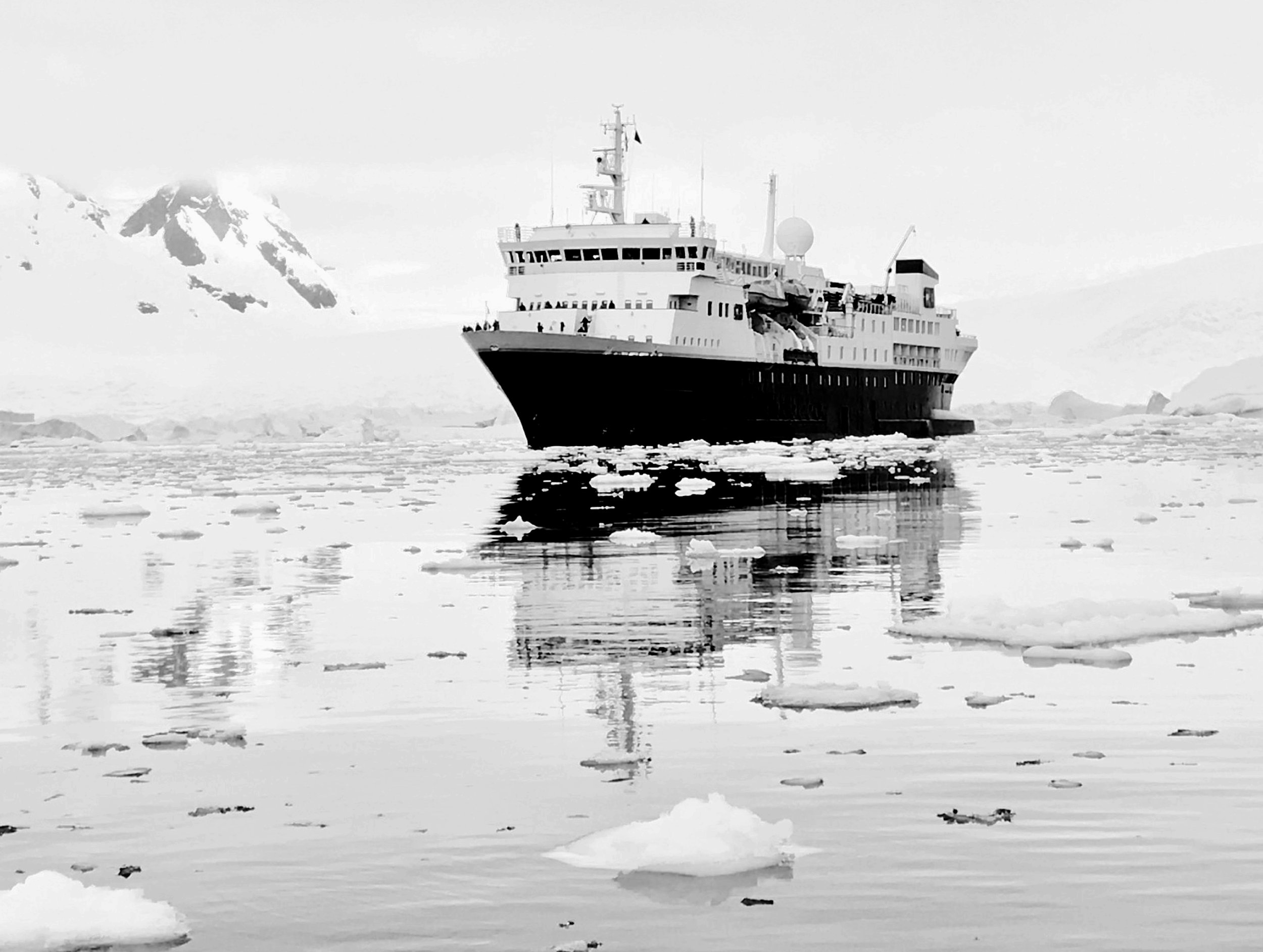Antarctica in March
March is the end of the season, but still offers a unique opportunity into this icy world. The transition from summer to autumn brings a blend of wildlife, stunning landscapes, and fewer crowds. This guide will walk you through everything you need to know while traveling to Antarctica in March.
Weather in Antarctica in March
Weather Conditions
March marks the beginning of autumn in Antarctica. The weather becomes more unpredictable, with temperatures ranging from -20°F to 30°F. Daylight hours gradually decrease throughout the month, providing around 12 hours of daylight by the end of March. This changing light creates beautiful scenes as the sun dips lower on the horizon, providing great opportunities for photographers.
Despite the cold, the Antarctica weather in March can be relatively mild compared to the harsh winter months. However, travelers should be prepared for sudden weather changes, including strong winds and snowfall. The average temperature in Antarctica in March is between -20°F to 30°F.
Daylight Hours
The daylight hours, while shorter during the winter months, still provide ample time for exploring and participating in outdoor activities. Layered clothing and proper gear are essential to stay warm and comfortable. Investing in high-quality thermal wear, waterproof outer layers, and insulated boots can make a significant difference, allowing you to fully enjoy your Antarctic experience.
Challenges and Considerations
Traveling to Antarctica in March comes with its own set of challenges. Weather-related delays are common, and certain areas may become inaccessible as the ice starts to form. Travelers need to be flexible with their itineraries and prepared for potential changes in plans.
Logistics and Safety
It is essential to do thorough research and choose a reputable tour company that prioritizes safety. Due to the harsh weather conditions and remote location, proper planning and preparation are crucial for a safe and enjoyable trip. Tour operators will provide necessary gear, equipment, and guidance to ensure your safety at all times. It's also important to follow all safety protocols and regulations while visiting Antarctica, as the delicate environment must be preserved.
Remote Accessibility
Antarctica is one of the most remote and isolated places on Earth, making it challenging to access. The closest cities, Ushuaia in Argentina and Punta Arenas in Chile, are approximately 1,000 miles away from Antarctica. These cities serve as the main gateways for expeditions to the icy continent. Travelers often embark on expedition cruises or flights from these locations, which can take up to two hours on a flight and up to two days by boat.
Where to Go Antarctica in March
Anvers Island
Home to the United States' Palmer Station, Anvers Island offers various research opportunities in fields such as marine biology, glaciology, and climate science. It also features stunning landscapes that include the stunning Marr Ice Piedmont, towering ice cliffs, and expansive glaciers. The island is home to diverse wildlife, from seals and penguins to seabirds and other marine creatures, making it a rich environment for ecological study and discovery.
Neko Harbour
Nestled on the Antarctic Peninsula, Neko Harbour is one of the few spots where visitors can set foot on the mainland itself. Its proximity to glacial fronts provides amazing views of calving ice. The harbor is home to a variety of wildlife, including Gentoo penguins and Weddell seals, making it a prime location for wildlife enthusiasts.
Elephant Island
Famous for its role in Shackleton's Endurance expedition, Elephant Island offers dramatic cliffs and a small population of Chinstrap penguins. This remote island, located in the Southern Ocean, is steeped in history and was a critical refuge for Shackleton and his crew. Its historical significance and rugged beauty, combined with its challenging weather conditions and stunning seascapes, make it a unique and fascinating destination for adventurers and history enthusiasts alike.
What to Do in Antarctica in March
Snowshoeing
Snowshoeing in Antarctica allows you to traverse the snowy landscapes, offering an immersive experience on the continent. As you trek through fresh snow, you'll have the freedom to explore areas that are inaccessible by larger vehicles or ships, revealing secluded spots. SThis activity is suitable for all fitness levels and with the guidance of an experieced expedition leader, you will learn all about the flora and fauna of this continent.
Zodiac Excursions
Zodiac excursions are a staple of Antarctic exploration, allowing you to navigate the intricate waterways and get up close to wildlife and ice formations. These excursions are almost always included in a cruise expedition approximately two times a day once you reach the continent. The zodiacs are inflatable boats that are very sturdy and are able to traverse icy passages and enter coves.
On these excursions, you'll have the chance to see marine animals like seals and penguins, and if you're lucky, you might even encounter a pod of orcas.All zodia excursions are led by expert guides.
Visiting Research Stations
For those interested in science and discovery, visiting research stations like Palmer Station on Anvers Island or Vernadsky Research Base on the Argentine Islands offers a rare glimpse into the ongoing scientific efforts in Antarctica. You can learn about the cutting-edge research being conducted in fields such as glaciology, marine biology, and climate science. Interacting with scientists and seeing their work firsthand provides a deeper appreciation of the challenges and triumphs of conducting research in such an extreme environment.
Polar Plunging
For the brave, a polar plunge is an exhilarating way to experience the icy waters of Antarctica. This nerve-tingling activity involves taking a quick dip in the freezing cold waters, often with the support of fellot travelers cheering you on. Safety measures are always in place, including quick rescue by zodiac boats and immediate warm-up facilities.
Educational Lectures and Workshops
Many Antarctic expeditions offer a range of educational lectures and workshops led by experts in fields such as biology, geology, and history. These sessions deepen your understanding of the unique Antarctic environment and its global significance. Topics might include the adaptations of Antarctic wildlife, the history of polar exploration, or the latest findings in climate science.
Wildlife and Natural Phenomena in March
Bird Watching
In March, Antarctica becomes a haven for birdwatching enthusiasts. Beyond the iconic penguins, many seabirds return to their breeding grounds, offering valuable viewing opportunities. Species such as the majestic albatross, including the wandering and black-browed varieties, follow the ocean currents. You may also spot skuas, petrels, and terns, each contributing to the rich avian diversity. These birds exhibit interesting behaviors, from mating dances to impressive hunting techniques. Watching these resilient creatures thrive in such a harsh environment underscores the incredible adaptability of wildlife in Antarctica.
Aurora Australis
The Antarctic night sky in March often comes with the Aurora Australis, or Southern Lights. This natural light display, caused by the interaction of solar wind with the Earth's magnetic field, paints the sky with vibrant hues of green, pink, and purple. Observing this phenomenon is a surreal experience that complements the stark, icy landscape below. The incredible light show can be unpredictable but is highly rewarding for those fortunate enough to witness it. Experts on your expedition will explain the science behind the auroras, enhancing your appreciation of this extraordinary spectacle.
Plankton Blooms
As the waters around Antarctica begin to cool, plankton blooms become more visible. These microscopic organisms form the foundation of the marine food web, supporting a vast array of ocean life, from krill to whales. In March, plankton blooms can create bio-luminescent displays, illuminating the ocean with a ghostly blue glow at night.
Weather Phenomena
Antarctic weather in March presents its own array of natural phenomena. Katabatic winds, which are intense draining winds descending from the highlands, showcase the power of the continent’s climatic conditions. These winds can sculpt ice and snow into intricate patterns and are responsible for creating the blue ice formations. Witnessing the sheer force of these winds offers a humbling reminder of nature's might, while the clarity of the cold, dry air results in clear skies, ideal for star gazing and capturing the grandeur of the Antarctic landscape through photography.
Events and Happenings in Antarctica in March
Photography Tours
One of the most captivating events in Antarctica during March is the specialized photography tours. These tours are led by professional photographers who are well-versed in the unique lighting and conditions of the Antarctic environment. Participants can learn advanced techniques for capturing the landscapes, diverse wildlife, and ice formations. The low-angled sunlight during March provides perfect lighting for dramatic shots, ensuring that your photographic journey in Antarctica will be both rewarding and educational.
Antarctic Marathon
The Antarctic Marathon is a remarkable event held in March that attracts endurance athletes from around the world. Running a marathon in such extreme conditions tests both physical and mental fortitude. Competitors traverse icy terrains and frigid temperatures, all while experiencing the beauty of their surroundings. This event not only highlights human endurance but also raises awareness about the unique challenges facing this pristine environment.
Ice Diving Expeditions
For the adventurous and suitably trained, March is an ideal time for these expeditions due to relatively stable ice conditions. Divers get the chance to explore beneath the ice surface, revealing a realm filled with marine life and underwater ice formations. This activity offers a closer glimpse into the hidden, vibrant ecosystems that thrive under the ice, guided by expert divers who provide insight into this seldom-seen environment.
Educational Workshops
Numerous educational workshops take place in March. These sessions are often conducted by scientists and researchers who specialize in polar studies. Topics can range from glaciology and marine biology to climate science and conservation efforts. These workshops not only offer rich educational content but also foster a deeper appreciation for the critical research.
Cultural and Historical Significance
Exploratory Expeditions
Antarctica's history is filled with tales of bravery and endurance. From Roald Amundsen's successful South Pole expedition in 1911, where he became the first person to reach the pole, to Ernest Shackleton's legendary survival story during the ill-fated Endurance expedition, these narratives inspire and educate. Shackleton's crew was stranded for months after their ship was crushed by ice, yet all survived against incredible odds. Visiting historical sites and landmarks, such as the huts used by these explorers or the exact locations of their significant achievements, connects you with the legacy of these intrepid adventurers.
Historic Huts
Several historic huts, preserved in their original state, offer a glimpse into the harsh conditions faced by early explorers. These huts, located in some of the most remote and inhospitable regions, are time capsules filled with artifacts, provisions, and personal belongings from the early 20th century. Each one tells a unique story of survival, ingenuity, and the indomitable human spirit. Exploring them provides a tangible link to the past, allowing us to witness firsthand the challenges and triumphs of those who paved the way for modern exploration.
Modern Research
Antarctica remains a vibrant hub for scientific research, drawing experts from around the world. Modern research stations, equipped with advanced technology, continue the rich tradition of exploration and discovery that has defined the continent for centuries. Visiting these stations and interacting with scientists offers insights into contemporary studies on climate change, glaciology, and marine biology.
Environmental Conservation Efforts
Protecting Ecosystems
Antarctica's ecosystems are incredibly delicate, making conservation efforts crucial to their survival. The continent is home to unique species that have adapted to the harsh, icy environment, and even small disturbances can have significant impacts. Various organizations work tirelessly to minimize human impact and preserve the continent's biodiversity, conducting research, monitoring environmental changes, and implementing protective measures. Visitors can support these efforts by adhering to strict guidelines, such as minimizing disturbance to wildlife, properly disposing of waste, and participating in conservation activities like beach clean-ups and citizen science projects.
Sustainable Tourism
Sustainable tourism practices are essential to preserving Antarctica's pristine environment. Tour operators follow strict regulations to minimize their footprint, such as limiting the number of visitors, using eco-friendly transportation, and ensuring all waste is managed responsibly. Travelers can contribute by choosing eco-friendly tours, reducing waste, and respecting wildlife habitats. They can educate themselves about the unique ecosystems and the impact of climate change on this fragile region, further promoting conservation efforts. By adopting these practices, we can help ensure that Antarctica remains unspoiled for future generations to appreciate and study.
Supporting Research
Supporting scientific research is another way to contribute to conservation efforts. Many tours donate a portion of their proceeds to research initiatives, providing crucial funding for studies that can lead to significant environmental breakthroughs. Visitors can also engage with scientists during these tours to learn about ongoing projects, such as wildlife monitoring, habitat restoration, and climate change mitigation. By understanding these efforts, individuals can discover additional ways to help, whether through volunteering, spreading awareness, or making informed lifestyle choices.
Practical Advice for Visitors
Packing Tips
Packing for Antarctica requires careful consideration due to the extreme and unpredictable weather conditions. Layered clothing is essential to adapt to changing temperatures, ensuring you're both warm and flexible. Start with thermal underwear and add insulating layers like fleece or wool. Waterproof and windproof outer layers are important to protect against snow and icy winds. Additionally, gloves, hats, and thermal socks are must-haves to keep your extremities warm. Don't forget sunscreen and sunglasses to protect against the intense UV rays reflecting off the snow and ice. It's also wise to bring lip balm, hand warmers, and durable, insulated boots for added comfort. For more detailed tips and a complete packing checklist, check out our blog post on what to pack for Antarctica!
Health and Safety
Health and safety are imperative in such a remote and extreme environment. Ensure you have comprehensive travel insurance that covers emergency evacuation, medical expenses, and any potential unforeseen incidents. Follow your tour operator's guidelines for staying safe, including recommendations on appropriate clothing, gear, and necessary vaccinations. Be prepared for the physical demands of the trip by engaging in suitable training beforehand and understanding the potential risks associated with the terrain and weather conditions. Always carry a first aid kit and familiarize yourself with basic emergency procedures.
Responsible Travel
Responsible travel practices are crucial for preserving the pristine and fragile ecosystem of Antarctica. Respect wildlife by maintaining a safe distance and avoiding any disturbance to their natural behaviors. This includes not feeding the animals or interfering with their habitats. Follow Leave No Trace principles to minimize your impact on the environment, such as packing out all waste, avoiding trampling vegetation, and being mindful of your energy use. Supporting local conservation efforts, such as participating in research programs or donating to conservation organizations, adds a positive dimension to your visit and helps ensure that future generations can also experience the unique beauty of this remote region.
Frequently Asked Questions
-
In March, temperatures in Antarctica can vary significantly depending on the specific location. Along the coast, where many research stations and tourism activities are concentrated, temperatures typically range from 5°F to 32°F (-15°C to 0°C). Conversely, in the interior of the continent, temperatures can plummet to -40°F (-40°C) or even lower. March marks the end of the summer season and the beginning of the transition into the colder, darker winter months. Therefore, visitors should be prepared for rapidly changing weather conditions and ensure they have appropriate clothing and gear for extreme cold.
-
Yes, March can be a good time to visit Antarctica, although it presents unique challenges and considerations. March marks the tail end of the Antarctic summer, offering an opportunity to witness a quieter, less crowded environment as the tourism season wraps up. Visitors during this time may experience spectacular sunsets and sunrises, longer twilight periods, and the chance to see the continent preparing for winter. However, weather conditions become more severe, with temperatures dropping and more unpredictable storms. Wildlife sightings may be fewer as many species start migrating away or preparing for the colder months. As always, a successful trip requires thorough preparation, flexibility, and adherence to safety and sustainability guidelines.
Conclusion
Although the end of the season, March is still a great opportunity to visit Antarctica, as there are less crowds. This is also the best time of the season for whale sightings.
Consider embarking on this extraordinary adventure and discover the magic of Antarctica for yourself. Whether you're a seasoned traveler or a first-time explorer, the memories you create here will last a lifetime. Ready to plan your trip? Reach out to our expert travel advisors and start your Antarctic journey today!
Interested in visiting Antarctica in another month? Check out our other guides below:
























